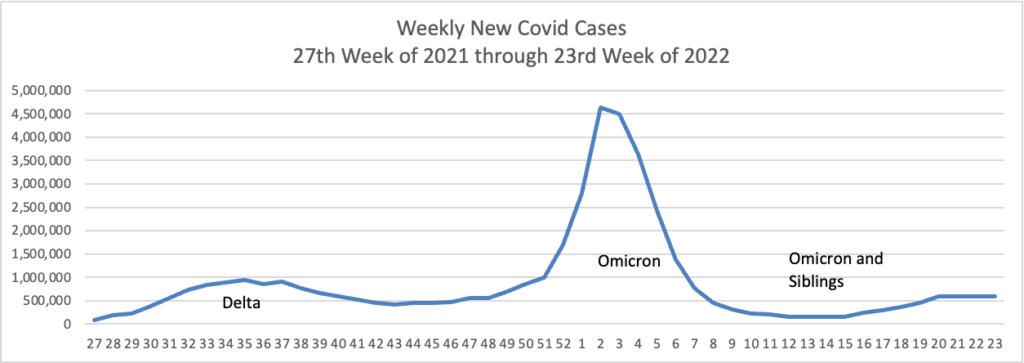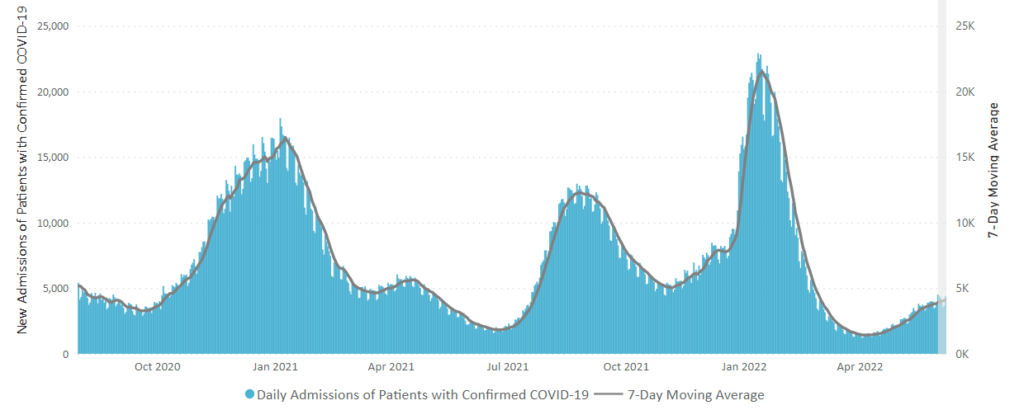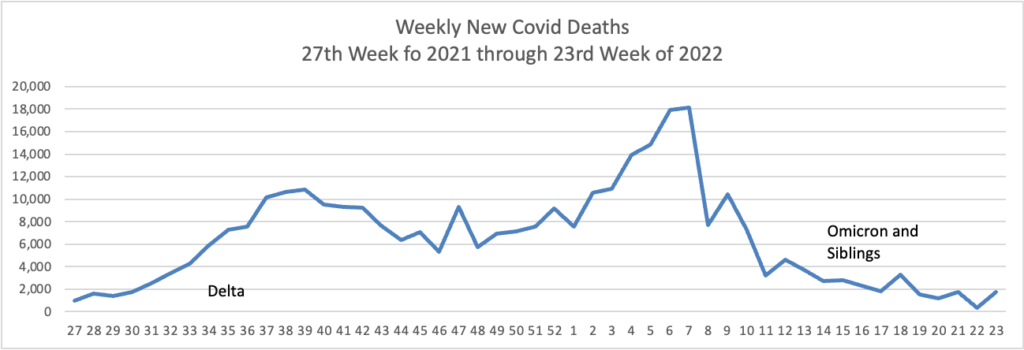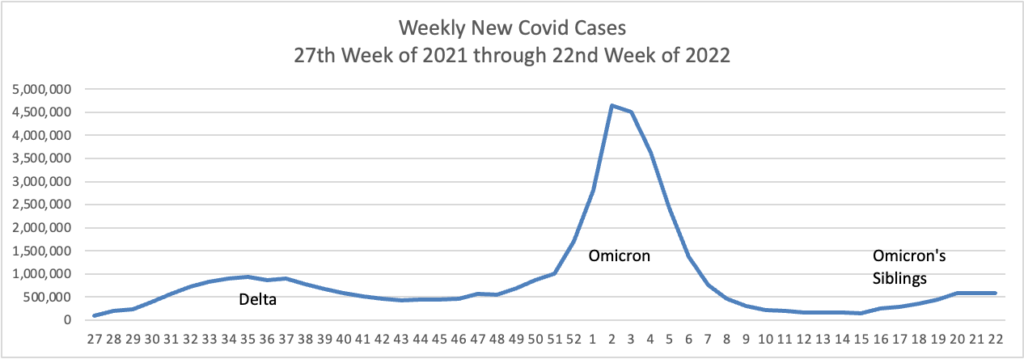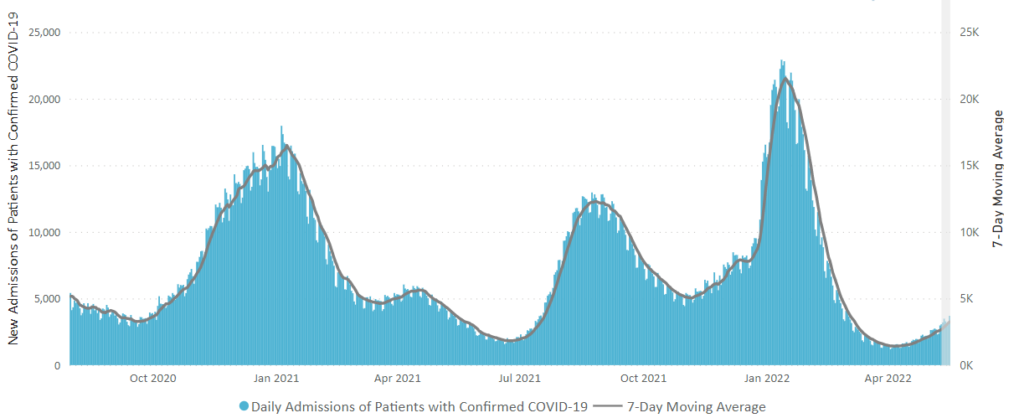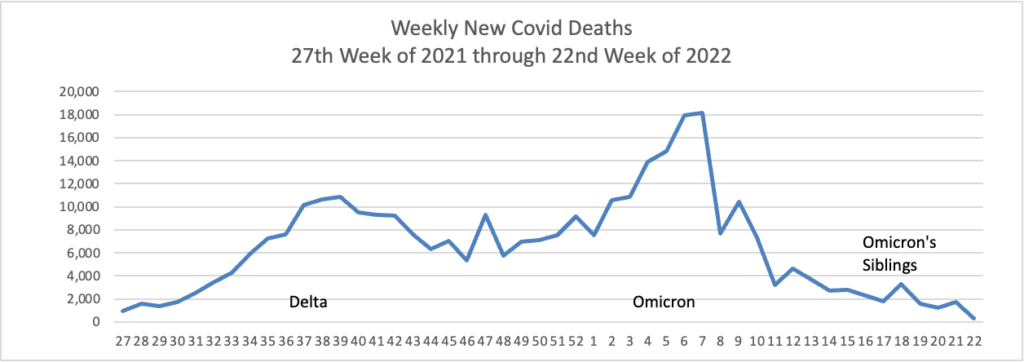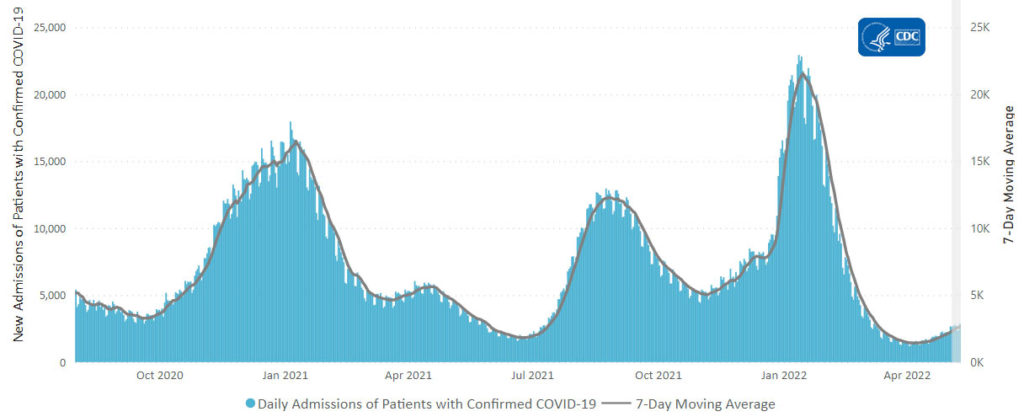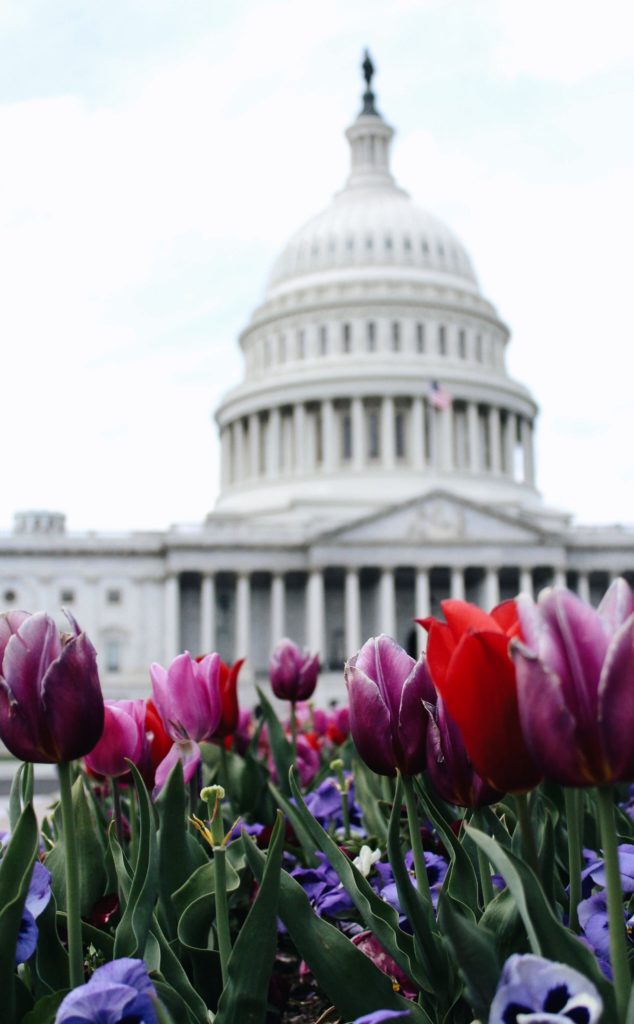Monday Roundup

From the Omicron and siblings front, the Wall Street Journal reports
A Covid-19 vaccine developed by Sanofi SA and GSK PLC to target the Beta strain of the virus produced a stronger antibody response against variants of Omicron when given as a booster compared with certain first-generation shots, two studies have found.
The results are the latest indication that tweaking vaccines can nudge antibody responses in the direction of new variants, possibly helping to shore up immunity as the virus mutates. The study results may also provide an opportunity for Sanofi and GSK, two vaccine giants that were late to develop Covid-19 immunizations, to play a role in providing booster shots.
What’s more, according to the Journal
A panel of advisers to the Food and Drug Administration is set to meet Tuesday [June 14] to consider whether use of Moderna Inc.’s Covid-19 vaccine should be expanded to include children ages 6 through 17.
The advisory committee is expected to vote Tuesday afternoon on whether the benefits of vaccinating children in this age group outweigh the risks. The FDA will consider the vote in making a final decision on whether to clear the vaccine for use in children 6 years and older.
An FDA authorization could come within days. It would open the use of Moderna’s vaccine to children for the first time in the U.S., and give anyone still intending to inoculate their children 6 years and older against Covid-19 a second option.
Moderna’s vaccine has been authorized for use in adults 18 years and older since late 2020, while use of the other leading Covid-19 vaccine, from Pfizer Inc. and BioNTech SE, was expanded to anyone 5 and older last year.
From the FTC investigation front, FierceHealthcare updates us on the recently launched FTC investigation of the six largest PBMs. In other FTC news, Healthcare Dive tells us
** UnitedHealth and LHC Group have been hit by a request for additional information on their acquisition from the Federal Trade Commission, as regulators take an increasingly active role in overseeing healthcare M&A.
** The second request extends the waiting period the FTC has to challenge the deal. UnitedHealth agreed to acquire home health and hospice provider LHC for $5.4 billion in March.
** https://www.healthcaredive.com/news/regulators-unitedhealth-lhc-request-merger/625343/?utm_source=Sailthru&utm_medium=email&utm_campaign=Issue:%202022-06-13%20Healthcare%20Dive%20%5Bissue:42394%5D&utm_term=Healthcare%20DiveIn a filing with the SEC on Friday, the companies said they have been complying with regulators and will continue to do so.
Speaking of home health care, Home Health News discusses Aetna’s interest in the topic.
Aman Gill, Aetna’s director of product strategy and innovation, told Home Health Care News last month that a home health acquisition was “on the table” for the company.
This past week, at HHCN’s VALUE event, Aetna CMO Dr. Kyu Rhee reiterated the company’s commitment to the home as a setting of care. He also explained how care delivery has changed over the course of the last few years.
“We’ve been committed to home health and virtual care during the pandemic,” Rhee said. “And in our Medicare program, we’ve delivered tens of thousands of healthy at-home visits as well. … So my challenge to us as we think about the opportunity we have now and the next stage of this pandemic is: Are we going to persist in those values and make sure that the system delivers on those values, that hopefully we’ve learned over the last couple of years?”
From the Rx coverage front, the Food and Drug Administration announced
the [agency approved Olumiant (baricitinib) oral tablets to treat adult patients with severe alopecia areata, a disorder that often appears as patchy baldness and affects more than 300,000 people in the U.S. each year. Today’s action marks the first FDA approval of a systemic treatment (i.e. treats the entire body rather than a specific location) for alopecia areata.
“Access to safe and effective treatment options is crucial for the significant number of Americans affected by severe alopecia,” said Kendall Marcus, M.D., director of the Division of Dermatology and Dentistry in the FDA’s Center for Drug Evaluation and Research. “Today’s approval will help fulfill a significant unmet need for patients with severe alopecia areata.”
The drug initially was FDA-approved for the treatment of rheumatoid arthritis in 2018.
From the HIPAA Privacy Rule front, the U.S. Department of Health and Human Services (HHS), through its Office for Civil Rights (OCR), announced
issuing guidance on how covered health care providers and health plans can use remote communication technologies to provide audio-only telehealth services when such communications are conducted in a manner that is consistent with the applicable requirements of the Health Insurance Portability and Accountability Act of 1996 (HIPAA) Privacy, Security, and Breach Notification Rules, including when OCR’s Notification of Enforcement Discretion for Telehealth – PDF is no longer in effect. * * *
The Guidance on How the HIPAA Rules Permit Health Plans and Covered Health Care Providers to Use Remote Communication Technologies for Audio-Only Telehealth may be found at: https://www.hhs.gov/hipaa/for-professionals/privacy/guidance/hipaa-audio-telehealth/index.html.

